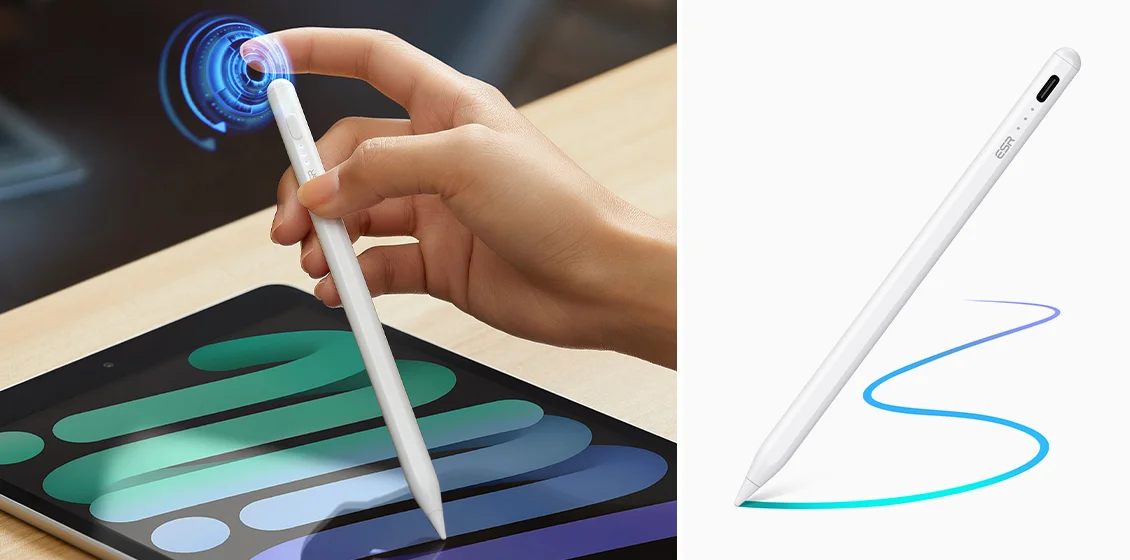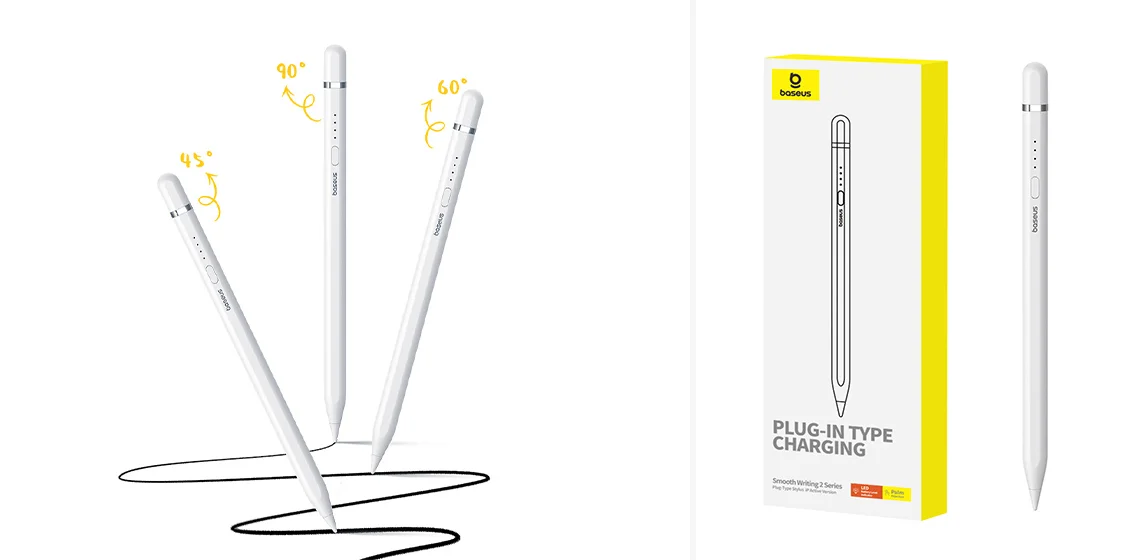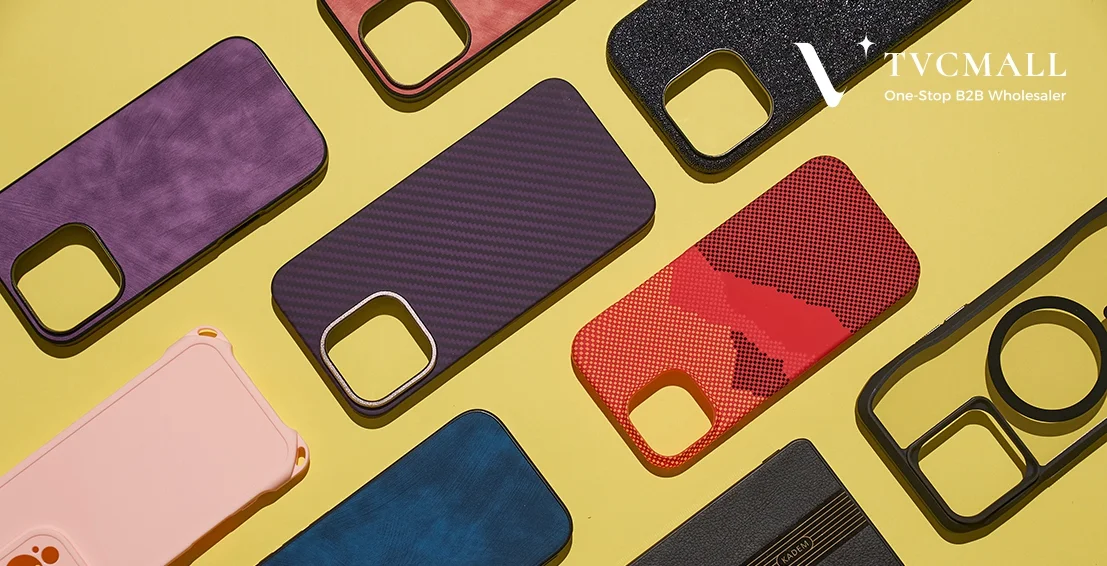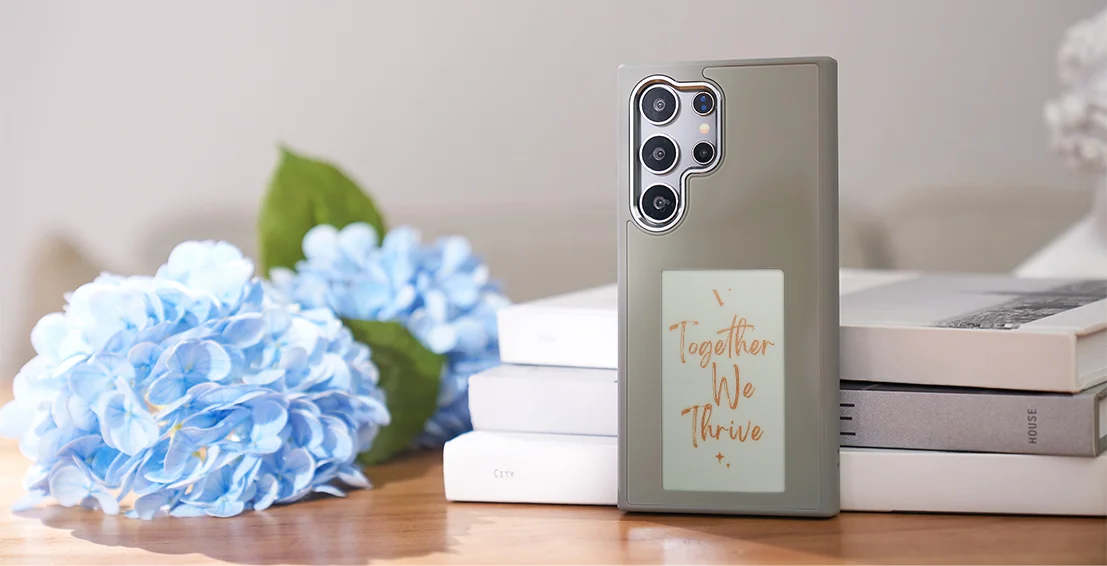8 Pros and Cons of the Stylus Pen for Mobile
Scrolling through your smartphone is a great way to pass the time. But you can take your mobile phone experience to the next level when you use a stylus pen. In this article, we’ll tell you everything you need to know about stylus pens, including the pros and cons of using a stylus pen for mobile.
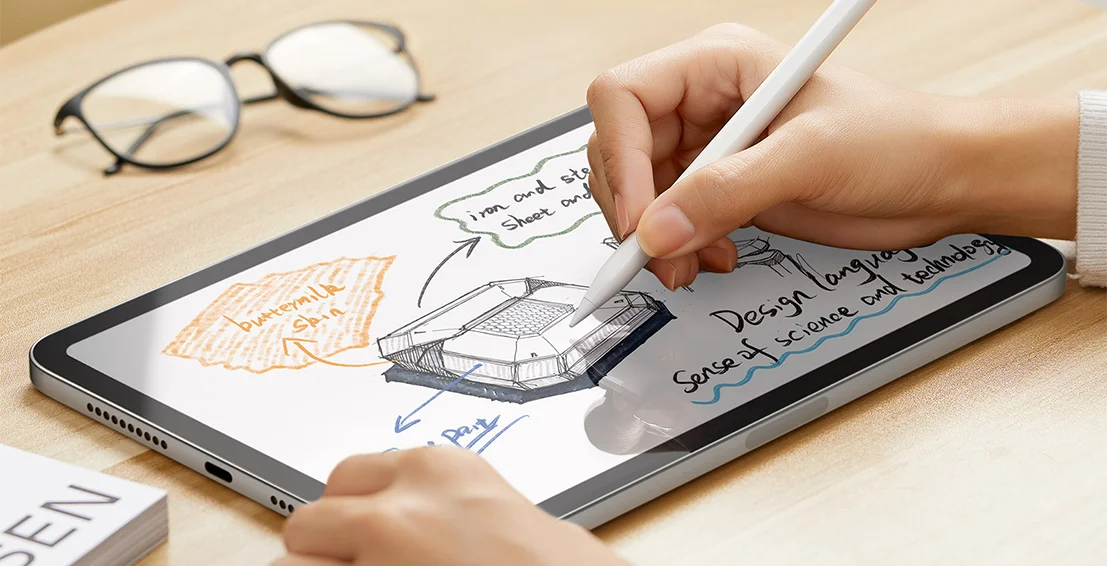
Your smartphone is a boredom buster. Whether you’re waiting for the doctor or an oil change, you can pass the time by scrolling through your social media feed. But while it may be impossible to reach the end of the internet, there are only so many funny cat videos.
A stylus pen for your mobile can open endless entertainment possibilities. You can draw a masterpiece or use a coloring app. Or you can get ahead of the curve by reviewing work documents. In this article, we give you the pros and cons of stylus pens for smartphones.
What Is a Stylus Pen for Mobile?
A stylus pen is a device used to interact with the touchscreen on devices such as smartphones and tablets. It is meant to replace the user’s fingertips and to provide a more versatile touchscreen experience. Almost any touchscreen will respond to the right stylus pen.
However, some touchscreens are also compatible with active stylus pens. Active stylus pens contain electrical components and have extra capabilities such as palm rejection and pressure sensitivity.
What Stylus Pen Is Best for My Device?
You can determine what stylus pen is best for your device when you figure out what type of touchscreen your smartphone has. There are two kinds of touchscreens, resistive and capacitive, and they differ in how they “know” they’re being touched.
Resistive touchscreens are made of multiple layers of material. The device “knows” where its screen is being touched when these layers are compressed together. Resistive touchscreens are compatible with most stylus pens.
Capacitive touchscreens are the most common type of touchscreens. Ready for a little bit of science? Capacitive touchscreens work through capacitance, which basically means that the touchscreen can sense that it is being touched by something that conducts electricity. It just so happens that the human body, i.e., a fingertip, is an excellent conductor of electricity.
Run-of-the-mill stylus pens won’t work with a capacitive touchscreen. If your device has a capacitive touchscreen, you’ll need a capacitive stylus pen. Capacitive stylus pens are made of materials that will conduct electricity from your finger to the touchscreen.
Use these “tests” to determine whether your touchscreen is resistive or capacitive.
➔ If you can use two fingers to zoom in and out, then your screen is capacitive.
➔ If you can use your touchscreen while wearing standard gloves, then your touchscreen is resistive.
What Is the Difference Between “Passive” and “Active” Stylus Pens?
Aside from choosing a stylus pen that is compatible with your touchscreen, you can also choose between a “passive” and “active” stylus pen.
A passive stylus pen simply takes the place of your fingertip. It’s about as technical as a wooden pencil.
An active stylus pen, on the other hand, has extra bells and whistles thanks to electrical components that communicate with your smartphone. These advanced features make the stylus more versatile and enjoyable to use and can include:
● Palm rejection that allows you to rest your palm on the screen.
● Pressure-sensitive tips that allow a more realistic writing and drawing experience.
● Tilt sensitivity for artistic renderings.
● And more.
Active stylus pens communicate using one of five “languages.” The compatibility of a stylus pen to a particular smartphone will depend on whether they use the same language. That’s why some active stylus work for iPhones while other stylus pens work with Samsung and so on.
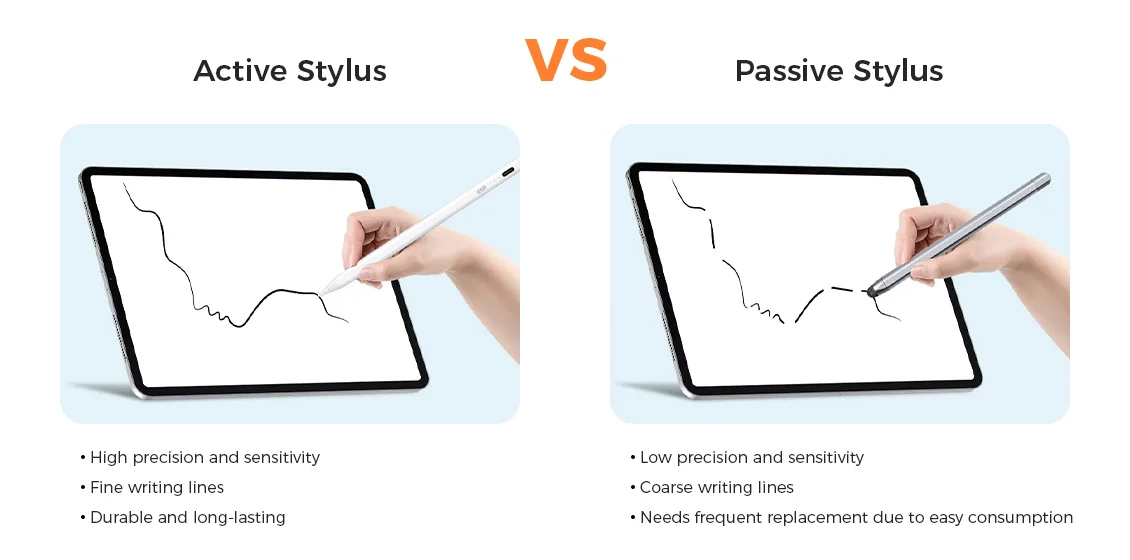
As with any purchase, it’s always best to weigh the pros and cons before buying a stylus pen.
Pros of Using a Stylus
1. Maybe you’ve gotten by just fine without a stylus pen till now. But there are pros to using a style pen.
2. A stylus pen is more precise than a finger. If you have large fingers, a stylus pen can help you operate your phone more precisely. Or, if you edit documents on your mobile phone, you can use a stylus pen to make more precise selections for your edits.
3. You learn more effectively when you handwrite notes with a stylus instead of typing. Studies show that handwriting works better for remembering and understanding new material. With a stylus, you have the advantages of handwriting with the convenience of digital storage.
4. Your touchscreen will remain clean and clear when you use a stylus. You’ll have no more greasy fingerprints or unsightly nail scratches on your screen.
Cons of Using a Stylus
5. Stylus pens are great accessories for your smartphone. But there are some cons to using a stylus pen.
6. Stylus pens can be easily lost if you don’t have a holder that attaches to your phone.
7. You can’t rest your palm on your touchscreen while using a passive stylus pen, which might make for an awkward experience.
8. It may be difficult to find an active stylus compatible with your smartphone.
Find the Perfect Stylus Pen at TVCMALL
Whether you have a resistive or capacitive touchscreen, we have active and passive stylus pens to choose from. You’ll THRIVE when you find your Zen coloring and drawing with a stylus pen from TVCMALL. Find your stylus pen today.
Leave a Comment
Your email address will not be published. Required fields are marked *
Stay Current with TVCMALL Wholesale
Subscribe for free to our blog and get expert advice, industry insights, and top wholesale picks. Boost your sales with TVCMALL today!

